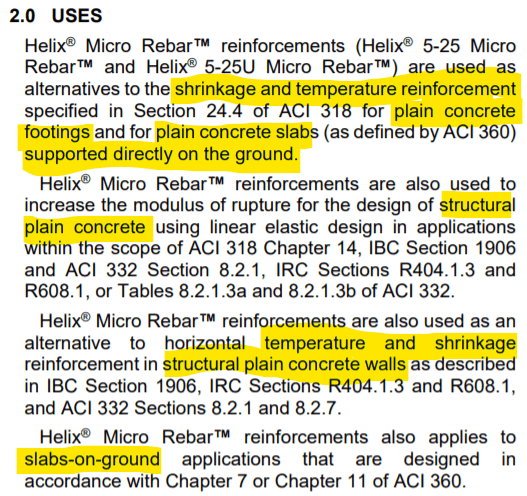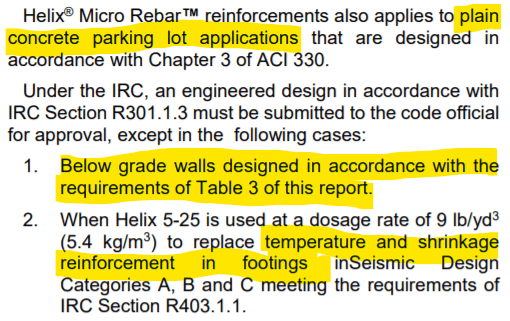Tomfh,
In AS3600/5100, it can only be used as a partial replacement for normal flexural reinforcement, varying amounts but not more than about 10%. And it cannot replace minimum reinforcement at all. In fact, minimum flexural reinforcement requiremnets probably increase when steel fibre is used.
The problem you get is that fibre takes tension up to a crack width of about .3mm but at reducing amount from about .05mm. So as the crack widens, the tension force it can carry reduces. Eventually it gets to the point where it releases comnpletely (assumed about .002 tension strain) and all of the tension force is then carried by normal reinforcement. So if you have reduced your normal reinforcement by 10% and the crack becomes wide enough, then you are 10% under-reinforced at ultimate strength. If you reduce normal reinforcement by 90%, you are stuffed. Unless it is a slab on ground so it cannot fall down!
On top of that, all steel fibres are not the same. As I understand it, Helix in its current form does not conform with the AS3600/5100 rules and reduces strength more quickly than some fibres and than the default available tension force/crack width option in AS3600.
If you have a .5mm crack, the fibre is probably completely failed and providing no tension force across the crack.
Further to that, it should be assumed to have no flexural capacity in members required to be designed for Seismic action and it is also very doubtful in fire resistance or any member that requires plastic redistribution of actions, as they all require high strains and wide crack widths.


